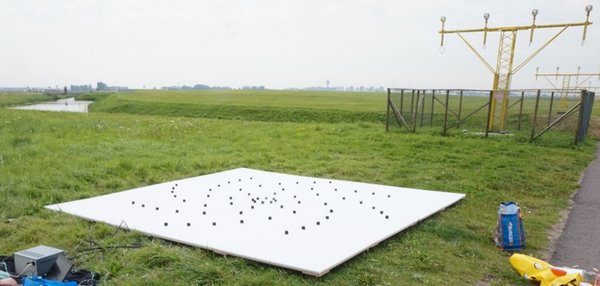Measurements at airports
At ANCE a lot of experimental work is going on. Part of this work happens at the airport, validating models with real life data.
Modelling is very important, but so is validating these results in the real world. Prof. Dr. Ir. M. Snellen explains the relevance of this balance: “A model always gives a result. You can make good pictures from this and with some logic see if it makes sense. But you have to try and measure it also. At ANCE the approach is to always combine modelling and measuring. Never one of the two will be left out.”
Noise Shielding

At ANCE, part of our research focuses on aircraft noise reduction, in order to investigate ways of reducing noise in future aircraft. The first part of the research investigated how noise shielding would reduce the noise by placing the engines above the wing. For a research like this, a tool is developed first to predict, which is then compared to measurements. The measurements were done at Schiphol with a microphone array. Dr. Roberto Merino Martinez explains, “Depending on the measuring environment, you have different challenges. At the airport, the aircraft is moving so you have to take the Doppler effect into account, as well as the atmospheric propagation effects. There are many issues that we try to solve.”
The goal
Air traffic is increasing each year, so even if aircraft become less noisy, the number of aircraft flying increases, which produces more annoyance to the population near airports. New, stricter regulations aim at decreasing noise levels even further in future aircraft.
Modern turbofan engines are already considerably quieter than older turbojet engines. In this situation, airframe noise becomes increasingly important, especially during landing. Therefore, it is essential to have a good knowledge of all the noise sources on the aircraft in order to reduce the total noise levels.
Psychoacoustics
Noise measurements are not only performed to improve existing noise models, but also to investigate the annoyance of aircraft sound, which is part of psychoacoustics. This is the research area concerned with how people perceive noise. An example test case for this is electric aircraft. It is commonly thought that electric aircraft are quieter than traditional aircraft, but this is not confirmed yet. Although the aircraft might be quieter, its sound can be perceived differently due to the propellers and therefore more annoying.
Acoustic imaging is very important for localizing and analyzing all sound sources on the aircraft and to evaluate how noise-reduction measures, such as noise shielding reduce the noise emissions.
For more information about this topic, you can contact Prof. Dr. Ir. M. (Mirjam) Snellen, B. (Bieke) von den Hoff or Dr. R. (Roberto) Merino Martinez.